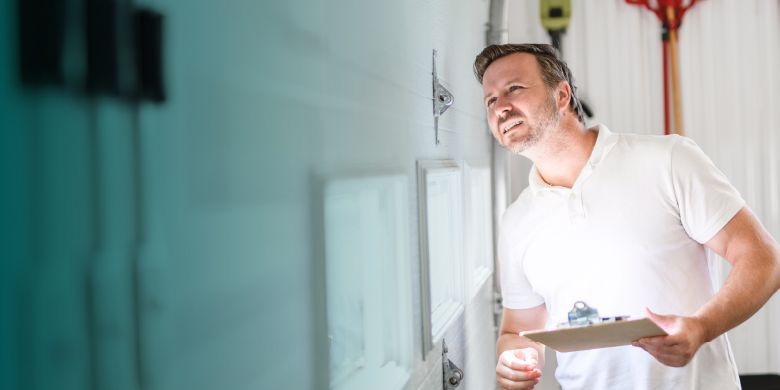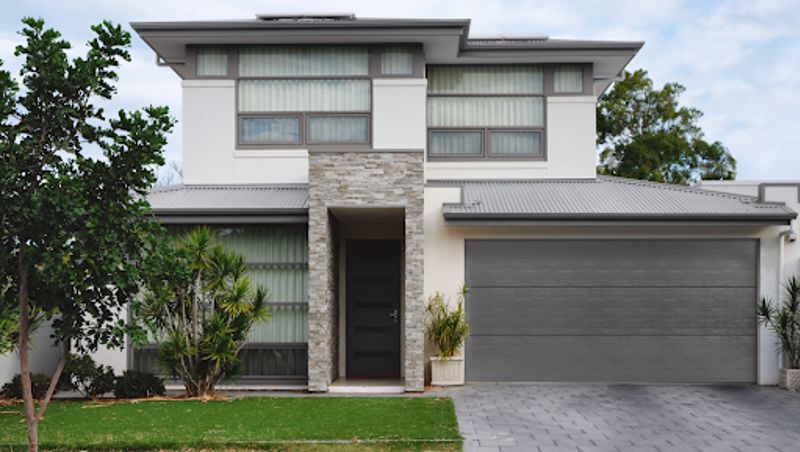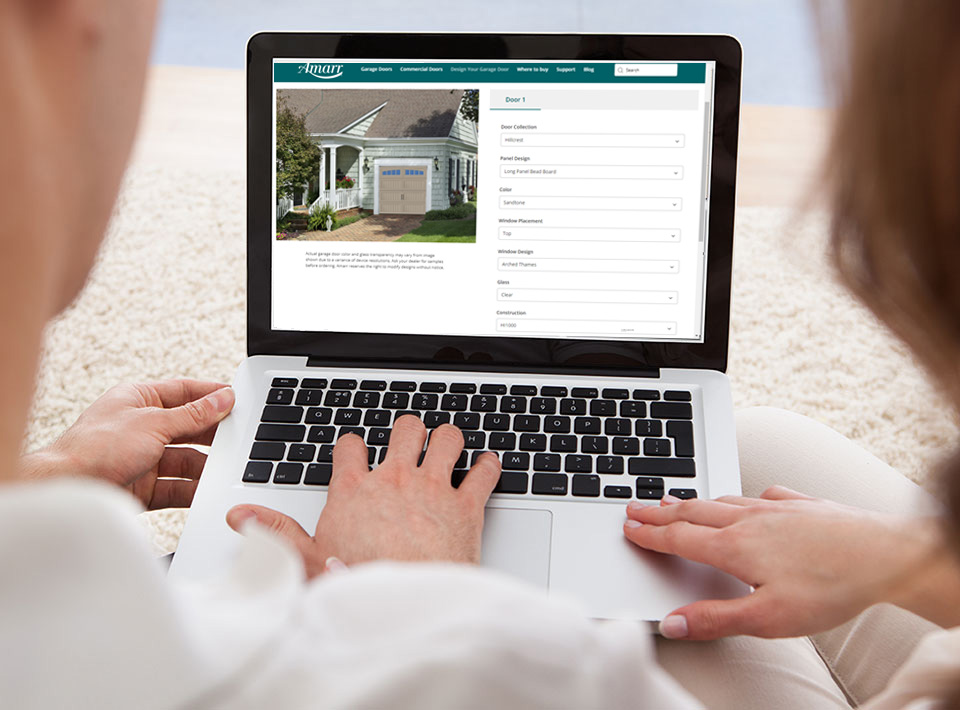How To Do a Garage Door Inspection (and Why It’s Important)
- Nov 6, 2024
- Safety & Security
- 7 minute read

A garage door might be relatively low tech, but it's still a mechanical device that requires care and maintenance. Regular garage door inspections are key to keeping your door in good working order. There are many benefits to routine garage door inspections and they're pretty easy to do. But if you're not sure where to start, don't worry — we'll tell you how to do a complete garage door inspection.
What Is a Garage Door Inspection?
What exactly is a garage door inspection? It's more than just a cursory glance at your garage door or noticing something you should fix at some point. It's a careful, deliberate visual inspection of all the parts of your garage door. Running through a checklist will help you avoid overlooking any components. It won't take long and it can have substantial benefits.
The Importance of Garage Door Inspections
You can inspect your garage door and all its components in under 10 minutes. An annual inspection is good; a monthly inspection is even better. Think about it, by spending just 10 minutes a month, you can notice small issues before they become big — and expensive — ones. Routine inspections are a key part of garage door maintenance. By regularly cleaning, tightening and lubricating various parts, you can avoid paying for a costly garage door repair in the future.
Inspecting your garage door regularly — and following up with any necessary maintenance — can also keep your home and garage safe and secure. It reduces the chances of your door malfunctioning and potentially crashing down on you or your car. It also keeps your garage closed and less inviting to thieves and burglars. A functioning and attractive garage door can also increase the value of your home. A typical garage door replacement can offer a return on investment of nearly 200%!
How To Conduct a Garage Door Inspection?
Here's a garage door inspection checklist you can use to evaluate the condition of your door:
- Check the tracks: If any debris, even something small like a pebble or a twig, gets onto the track, it can disrupt the rollers from sliding the door up or down. A build-up of dirt and dust can also erode the tracks and compromise their integrity. Clear any debris you find and then wipe the tracks down with a damp cloth.
- Inspect the rollers: If your door doesn't move smoothly, the problem may not lie on the tracks but with the rollers themselves. If the rollers are damaged or misaligned, they won't roll correctly. Look for any defects. Troubleshooting them in motion will help you notice if they are turning properly.
- Look for loose hardware: There are numerous screws involved in a garage door and because it's in repeated motion, these screws can loosen over time. If you never check them, you may not notice a problem until it's too late and your door suffers a collapse. Checking the hardware regularly and tightening it when necessary reinforces the structural integrity of your garage door and improves safety. It's also wise to examine the door springs to see if they're fitting snugly.
- See if any moving parts require lubrication: Sometimes wiping parts down isn't enough to minimize friction. Moving parts may require lubrication. Inspect these parts to see if they're moving raggedly or unevenly.

Occasionally lubricating the chain that raises and lowers your garage door helps it run more smoothly.
- Examine the door surface: Examine the outward and inward face of your garage door. Cracks, in particular, are something to be worried about. If the face of the door is merely faded, a new coat of paint can solve your problem. But cracks, fissures and water damage might indicate it's time for a garage door replacement. You may also consider retracting your door and looking at it from underneath. Sometimes, examining an overhead door can reveal issues you don't notice when the door is vertical.
- Check your batteries: There are few things more annoying than running late for work or an appointment only to be trapped inside because your garage door opener batteries are out of juice. Then you have to go back inside your home and rummage around for new batteries. Inevitably, you can't find any and have to take the ones out of your TV remote. At night, you'll get annoyed again when you go to turn on your TV and remember that you took the batteries out of your remote. Checking the garage door opener batteries and replacing them as part of your routine garage inspection will help you avoid this aggravating scenario.
- Clear away any debris: The last step is to simply sweep away any debris around your garage door. You never know when a leaf or twig might get blown onto the tracks of your door and cause problems. Also, make sure that anything you store in your garage isn't too close to the door. You don't want to bump into a tall stack of boxes and knock them into your door, forcing you to pay for a garage door replacement ahead of schedule.

Clearing out debris as part of your inspection can prevent future issues.
Signs Your Garage Door Needs Replacing
Even with all the garage door maintenance and repairs in the world, nothing lasts forever. Your inspection might reveal that it's time to replace your garage door. Here's what to look for:
- Garage door cracks: Cracks represent a serious threat to your garage door. Small cracks can grow into big ones. Sometimes caulking or applying wood filler will solve the issue, but in many cases, cracks indicate it's time for a new door or new door panel.
- Garage door peeling: If your garage door panel is peeling, you should consider a replacement. Peeling can take a long time to cause serious issues, but sometimes problems accelerate quickly, so it's important to keep an eye on it.
- Rusted parts or tracks: Some parts are easy to remove and clean or to scrub rust off of in situ. Others are inaccessible. Regular maintenance is key here so you can stop rust from spreading.
- Mechanical failures: There are several mechanical failures that can occur with a garage door. Some issues might only require replacing an accessible part. Others might require service from a handyperson or garage door repair technician. Other failures might necessitate purchasing a new garage door; it really depends on what part has failed and where it is.
What To Do When It's Time to Replace Your Garage Door?
Garage door inspection is a key part of being a homeowner. If you think your home could use a new garage door, Amarr has got you covered. You can start now by finding a garage door dealer near you!

If your inspection reveals a serious problem, this might be the perfect time to invest in a brand-new, beautiful garage door.
We can provide a beautiful garage door worth upgrading to. And if you're undecided, just remember that there's a good chance you'll recoup most — if not all — of the cost of installing a new garage door. That's the great thing about a new garage door. Not only can it increase the aesthetic value of your home, it can also be a wise financial investment, increasing your home's literal value.
Plus, you get to enjoy the convenience of a swift, new garage door that doesn't take ages to come up and down. Finally, a new garage door is also a safety measure, because new doors are far less likely to cause problems than older ones.

